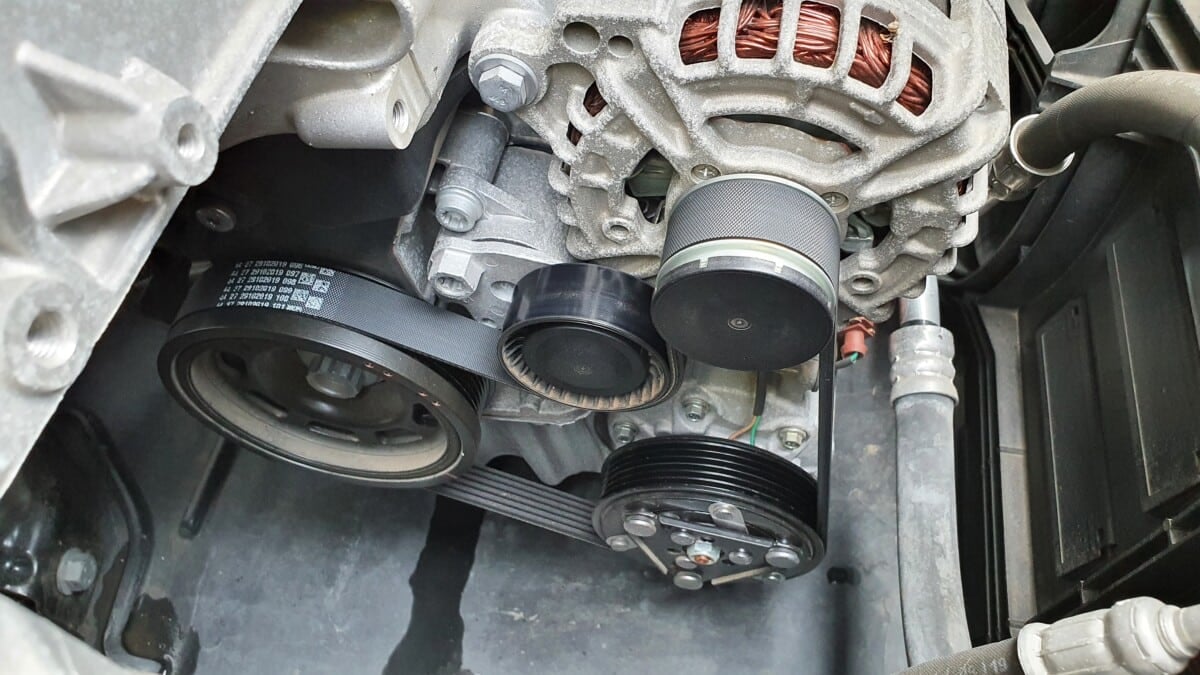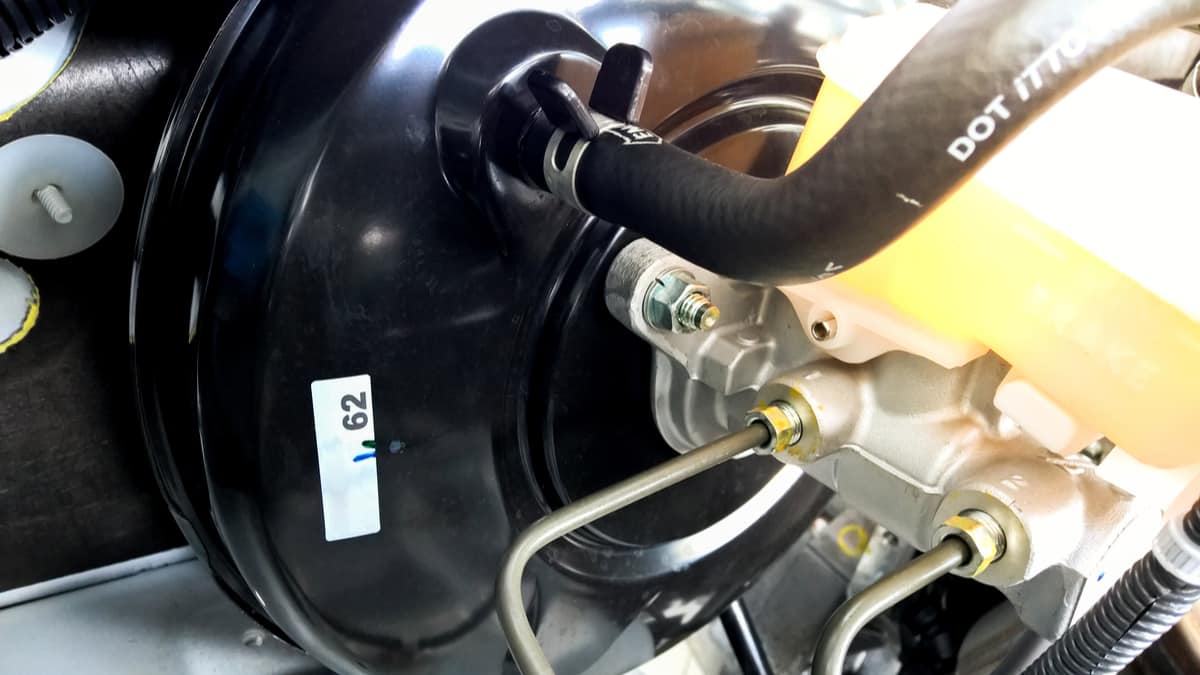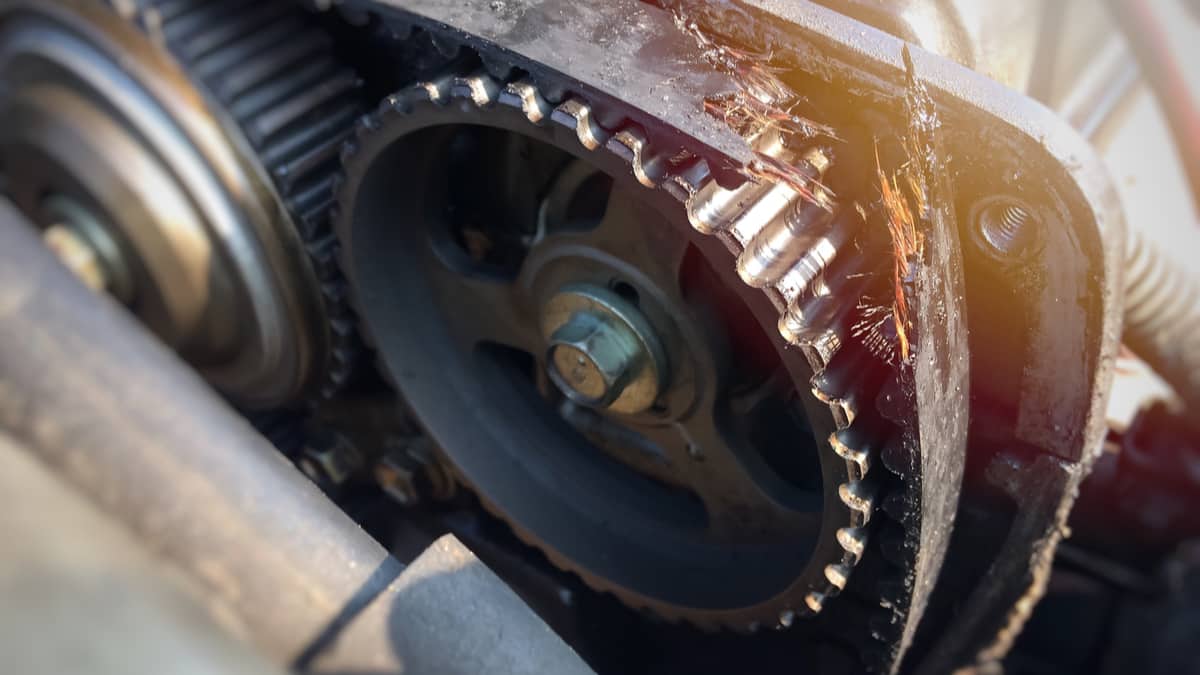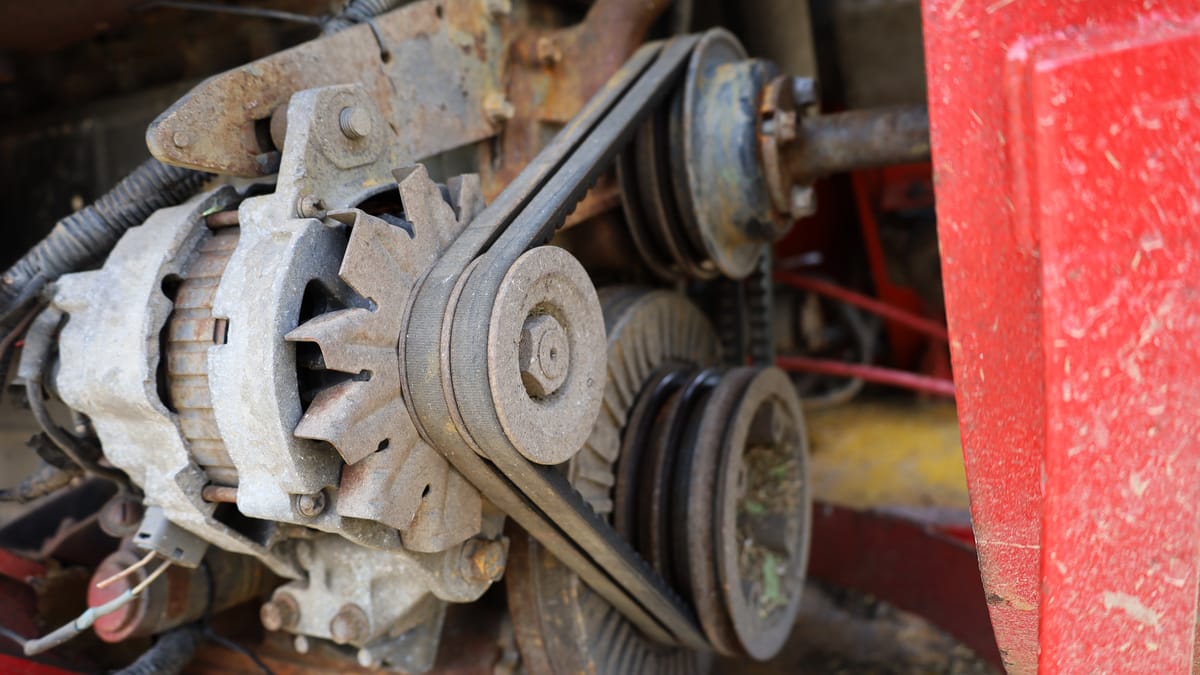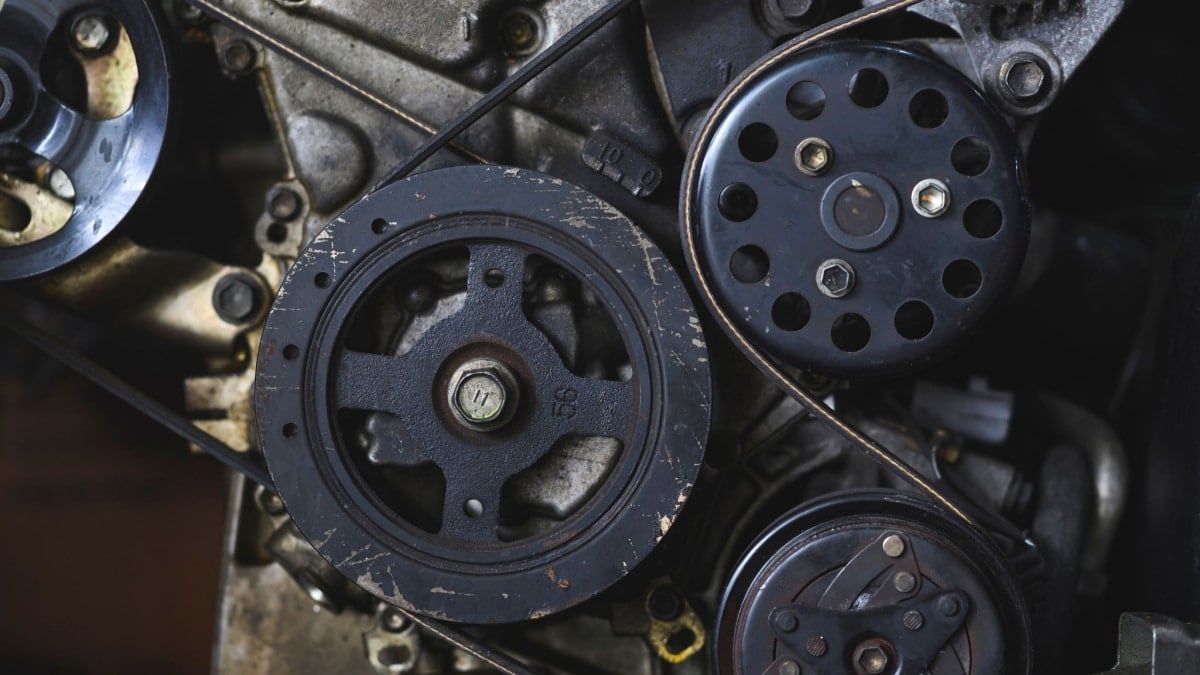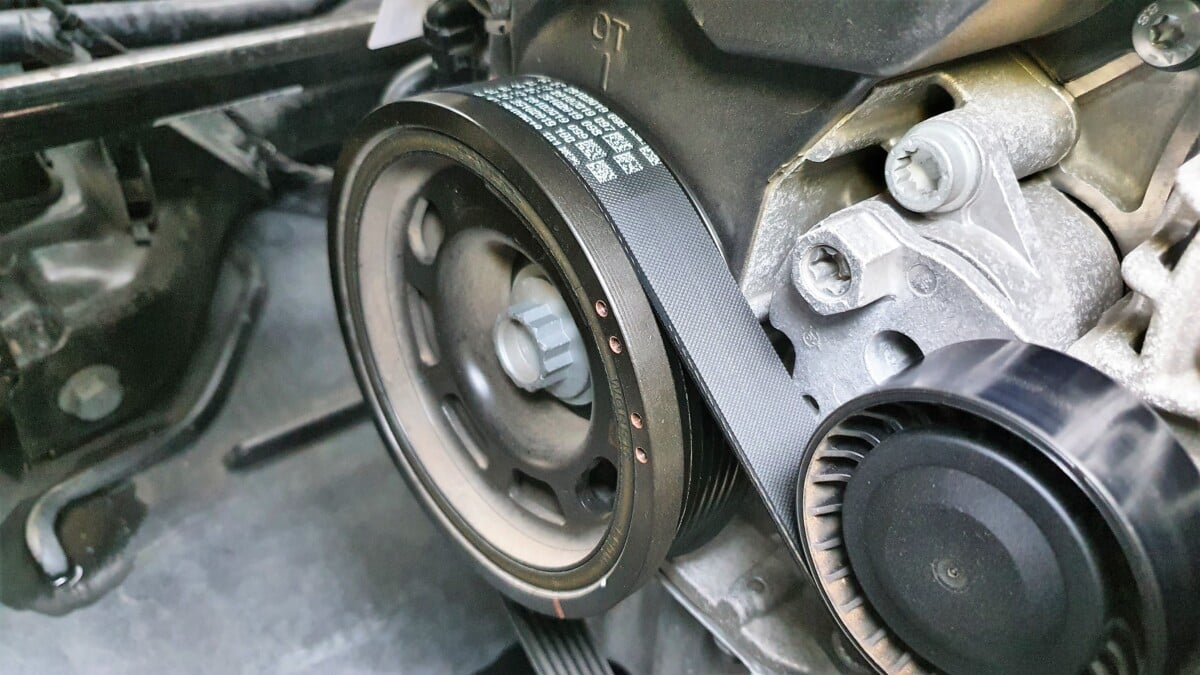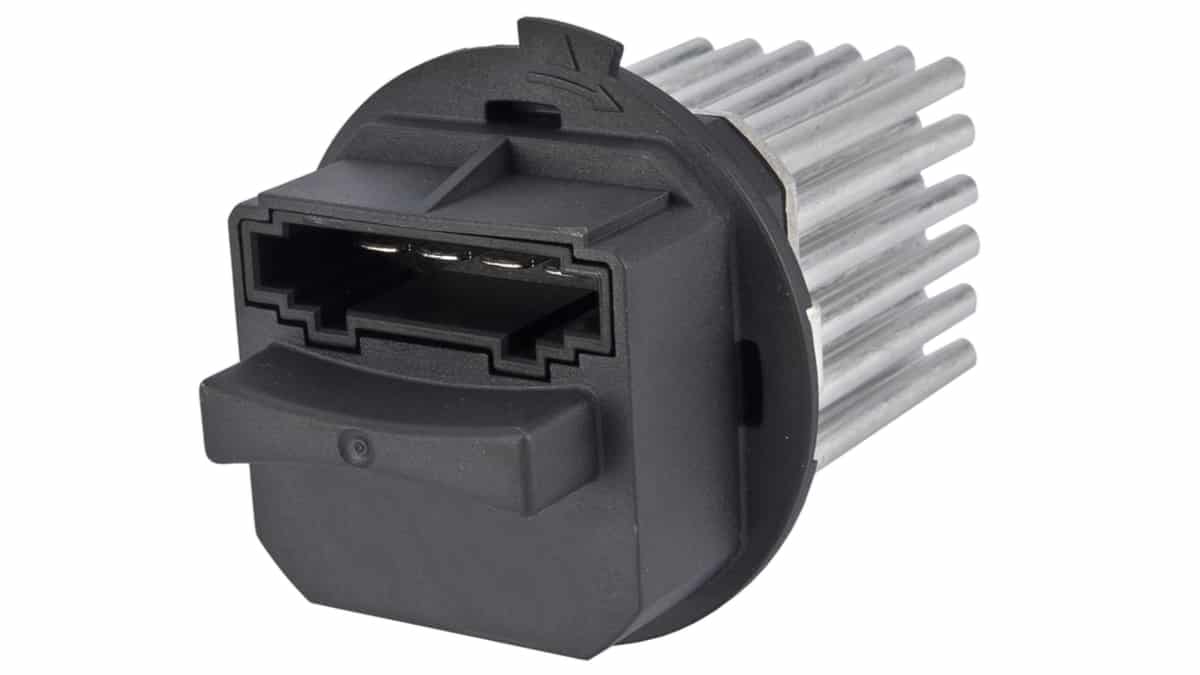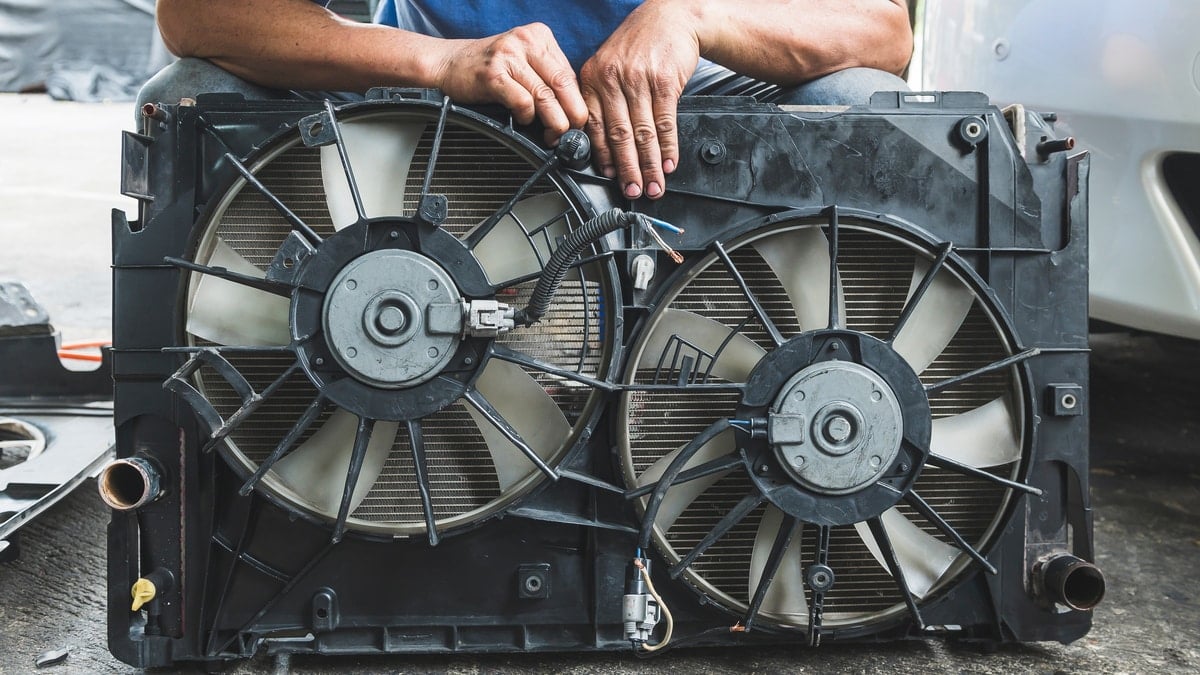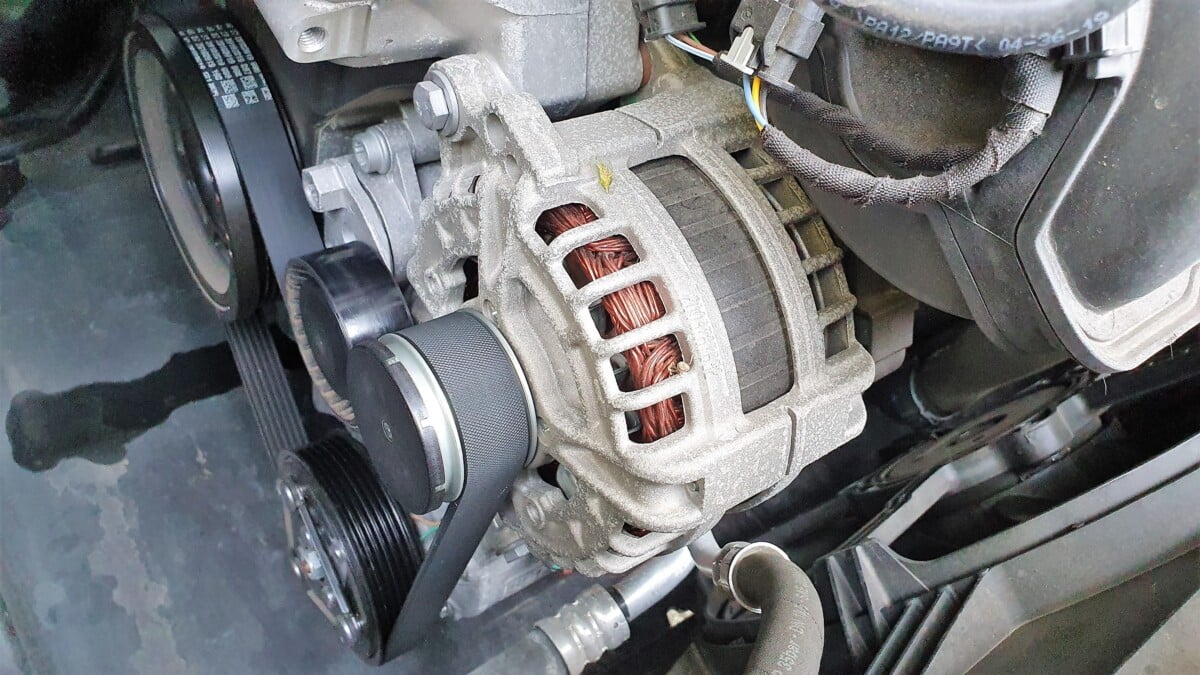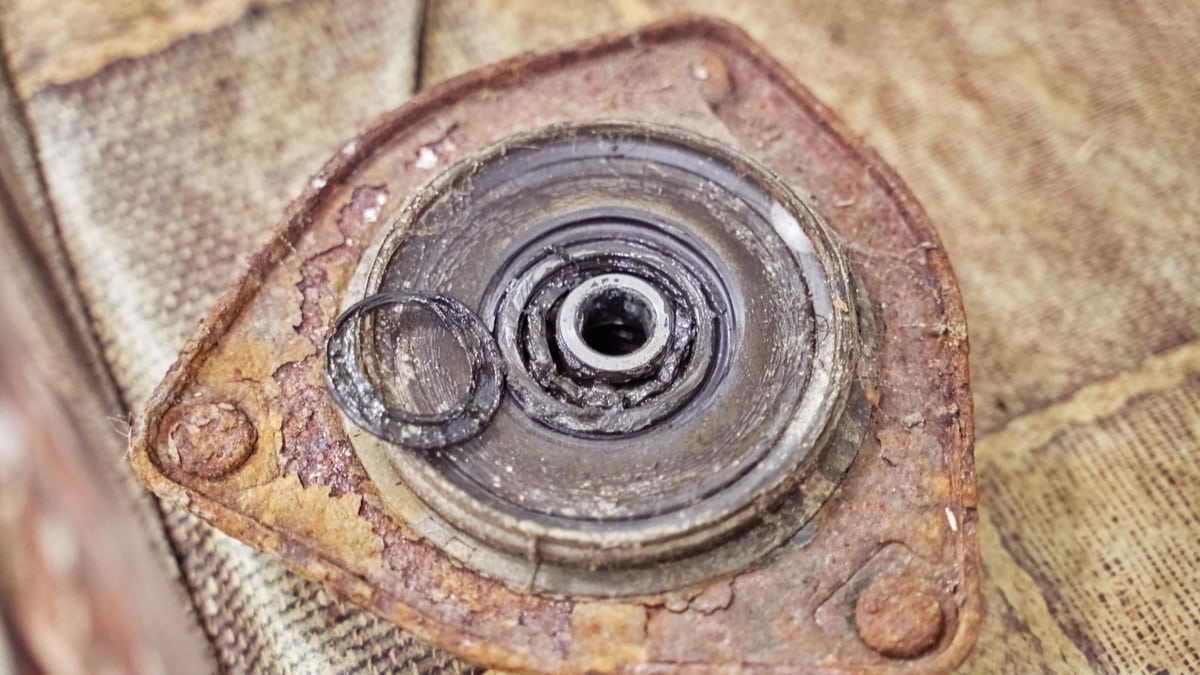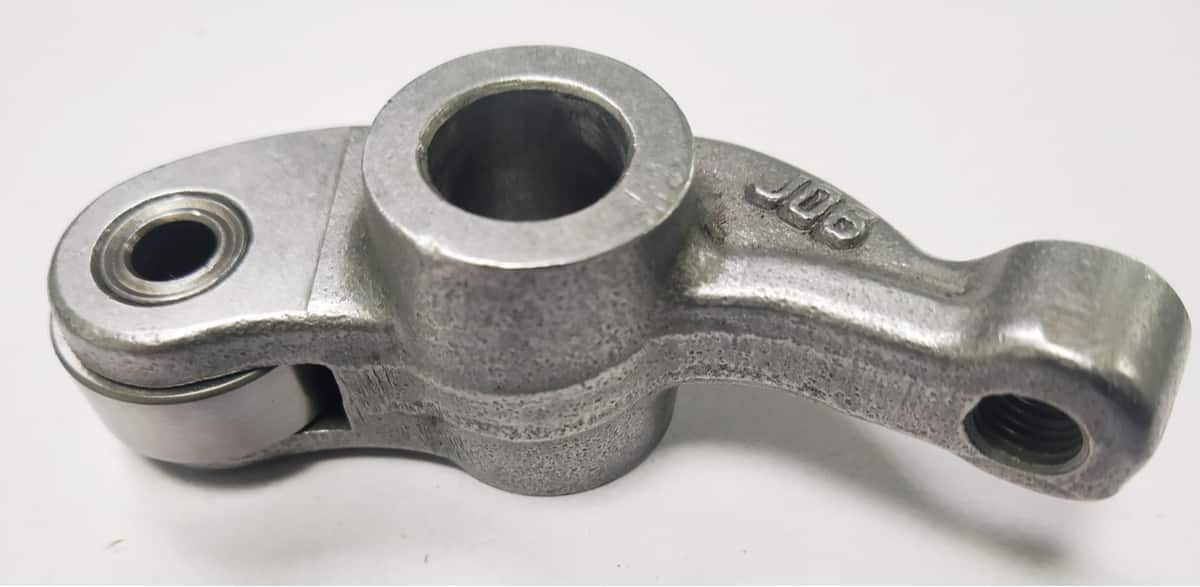Most serpentine belts are meant to last at least 50,000 miles, so replacement doesn’t occur frequently. Still, you want to know the symptoms of a bad serpentine belt, so you know when it’s time to replace it.
In this guide, we cover the top symptoms and example the function of the serpentine belt. We also look at its location and teach you how to inspect it. Finally, we touch on the average serpentine belt replacement cost and hit your top questions.
Symptoms Of A Bad Serpentine Belt
If the serpentine belt is bad or snaps off, you may see several warning lights on the dashboard, or the car may fail to run. It can also cause a loss of power steering, create a lack of air conditioning or lead to a squealing noise. The engine can also overheat, or you may notice physical damage to the belt.
Let’s examine some of these possible symptoms, so you know what to look for.
1. Warning Lights On Dashboard
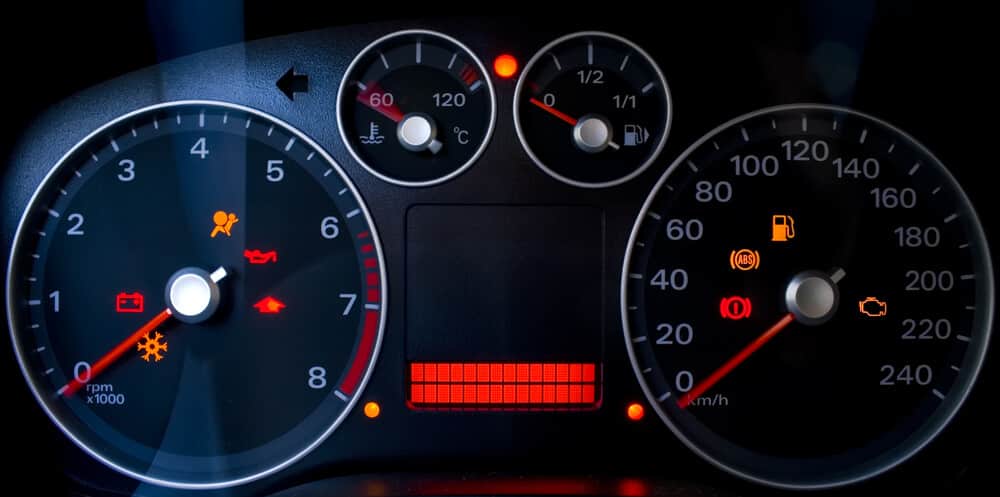
The serpentine belt is responsible for running the alternator, which charges the car battery. If the serpentine belt isn’t operating correctly, it could cause trouble with the alternator. As the car battery doesn’t charge, warning lights appear on the dashboard.
The battery light comes on and may initially make you think there’s a problem with the car battery. However, after a careful inspection, you may see it’s because of the belt instead.
2. Heavy Steering

The serpentine belt is also needed to run the power steering system. Without the power steering, you aren’t able to steer the vehicle easily. Instead, it will require a great amount of pressure to maneuver.
However, a loss of power steering doesn’t automatically mean that the serpentine belt is a problem. It could also be due to low power steering fluid, so that should be checked first.
3. Cracked Serpentine Belt (Visually)
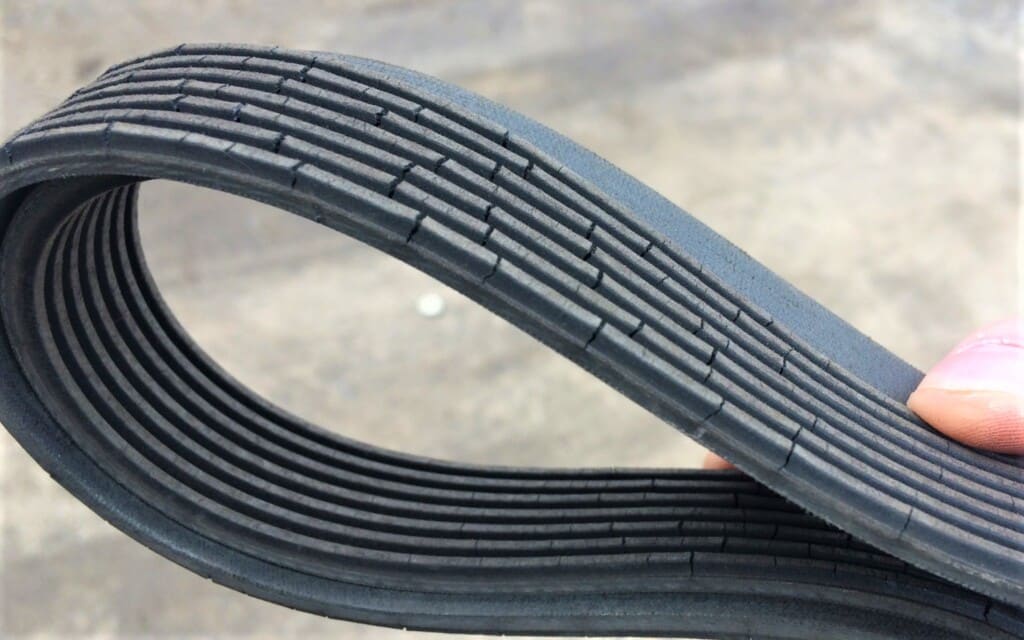
One of the easiest ways to determine if something is wrong with the serpentine belt is to look at it. A physical inspection can show you the wear, even if you aren’t mechanically inclined.
If you see any cracks, abrasions, separation or any other damage to the belt, you know there’s something wrong. You must replace it before it breaks completely.
4. Squealing Noises

One of the earliest warning signs of a bad serpentine belt is a squealing noise. If you hear strange squealing and high-pitched noises, you want to inspect the serpentine belt.
The squealing sound comes from misalignment or a worn belt. It can be a sign that the belt is slipping. Because of the early warning, you can replace the belt before larger problems occur.
RELATED: Serpentine Belt Squealing Noise: Causes & How To Fix
5. Air Conditioning Not Working
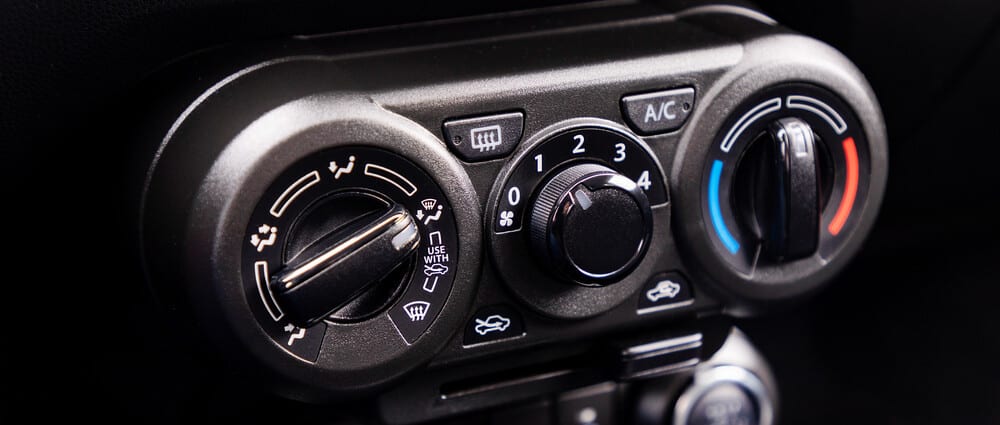
The serpentine belt is responsible for powering the air conditioning in your vehicle. If you can’t get cold air from the vents, it could be due to a problem with this belt.
Because the compressor runs from the serpentine belt, you may think you have an AC problem when you don’t. At the same time, you should notice trouble with other accessories running from the belt.
6. Overheating Engine

The serpentine belt can also be responsible for running the water pump. This vital component is needed to cool down the temperature of the engine.
A failing belt may no longer run the pump. If the engine starts to overheat, bigger problems could occur. With an overheating engine, you can also end up with a blown head gasket, which is an expensive repair.
7. Car Dies While Driving
If the serpentine belt stops running the alternator, the battery can’t be charged. As the power depletes from the battery, the car won’t run anymore. Plus, if you try to restart it, there won’t be enough power.
To prevent this from happening, it’s important to pay attention to the earlier signs. If you think the belt is failing, get it fixed before the battery becomes depleted.
RELATED: 6 Reasons Your Car Shuts Off While Driving & How To Fix It
Where Is The Serpentine Belt Located?
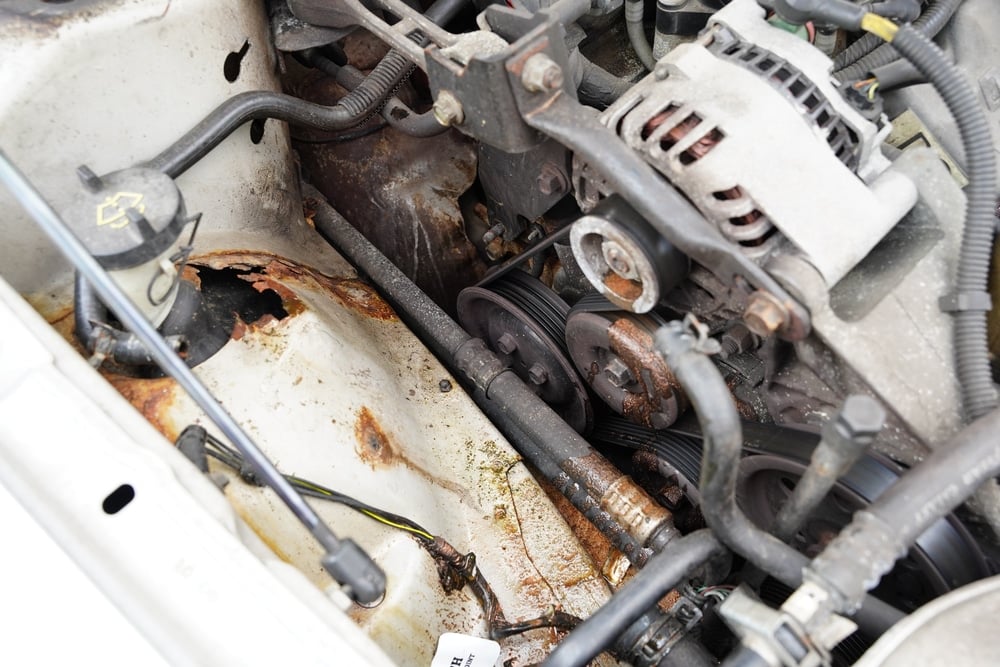
The car’s serpentine belt is found near the front of the engine. You’ll see it running through several pulleys in a particular configuration. It takes power from the crankshaft to other components, so it weaves in and out through these parts. You should see the serpentine belt running the alternator, power steering pump, water pump and AC compressor.
If your car has a traverse engine, it is installed sideways. Therefore, the front of the engine won’t be where you expect it to be. In this configuration, the serpentine belt is typically found closer to the right fender.
The best way to find the location of the serpentine belt for your vehicle is to look in a service manual. It’s also important to note how the belt weaves through the various components, especially if you need to replace it.
What’s The Function Of The Serpentine Belt?
On older vehicles, individual belts were used for each component under the hood. To streamline the processes, a serpentine belt, also known as the drive belt, was installed to power all of the various parts at once.
The serpentine belt takes power created by the crankshaft to power up various accessories. It runs through accessory pulleys and idler pulleys in a strange configuration that resembles a snake. In most cars, the serpentine belt runs the alternator, water pump, power steering pump and air conditioner compressor.
One side is usually grooved, giving it the traction it needs as it snakes through the pulleys. On the other side, the surface tends to be smooth.
How To Inspect The Serpentine Belt
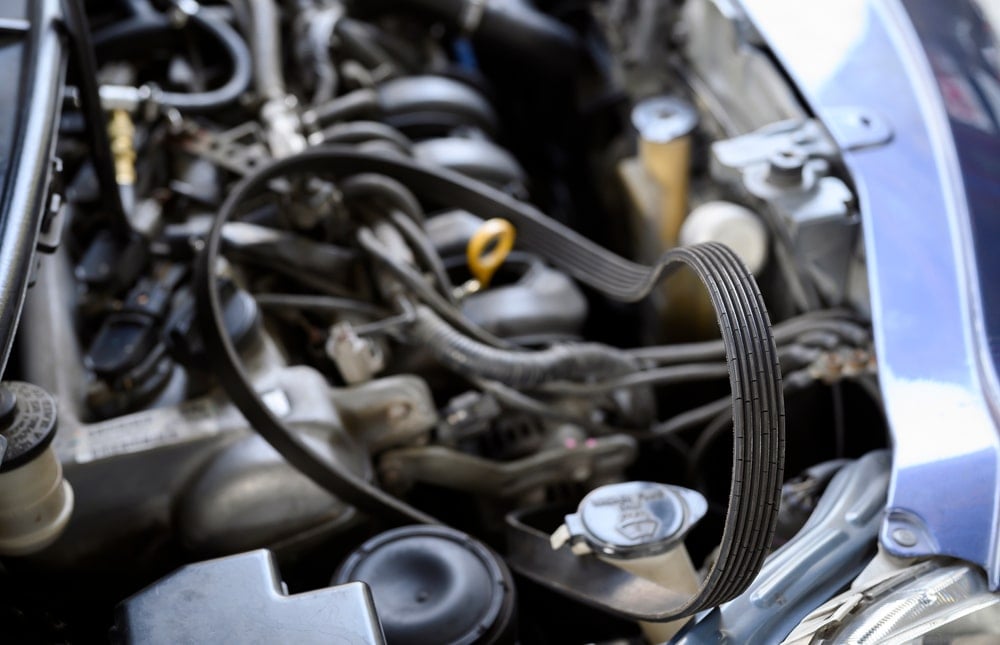
There are multiple ways to inspect the serpentine belt. We always recommend starting by listening to the belt. As they start to wear out, the belt becomes much noisier. If you hear squealing, especially when the engine first starts up, you can count on wear to the belt.
Aside from listening, you can also visually inspect the belt. Start by looking for signs of glazing on the top of the drive belt. Friction occurring between the pulleys and the belt can lead to glazed spots. Slippage because of a weak tensioner can also lead to this glazing.
Also, look for cracking or fraying at the edges and the top of the belt. It’s also wise to take a look at the belt ribs. Some of the material may shed as it ages, especially if it’s getting caught up on the pulleys or is misaligned.
You also want to check the tension of the belt. Find the longest run between the pulleys and push down gently on the middle of the belt. If the serpentine belt is properly routed and still in good condition, it will be taut. It shouldn’t have more than a half-inch of play. If the belt is worn out, you could see an inch or more of play.
If the tension is loose, you need to inspect the tensioner pulley and other pulleys driven by the serpentine belt. In many cases, a bad pulley or tensioner can cause the belt to snap off.
If your belt is made from ethylene propylene diene monomer (EPDM), the signs of wear aren’t as noticeable. In this case, it might be better to use a belt wear gauge instead. With the engine off, follow these steps:
- Put the wear gauge on the belt with the ribs fitting into the belt grooves.
- Seat the tool in place and hold it with light pressure.
- Attempt to rock the gauge in a back-and-forth motion.
If you have no trouble keeping the gauge seated with minimal movement, the belt is in good shape. In some cases, the gauge might even rest above the surface of the belts slightly.
Otherwise, if you can get the gauge rocking laterally or it lies flush against the belt, the material is wearing down. You should get it replaced before it causes trouble.
How Much Does A Serpentine Belt Replacement Cost?
It doesn’t cost much to replace the serpentine belt on most cars. On average, the drive belt costs $25 to $100, while labor may add another $125 to $300. If you can perform the labor yourself, you save on the additional expense.
The largest factor in determining the cost is based on what car you drive. You’ll pay less labor if the serpentine belt is easy to access and install. Many cars have a drive belt that’s straightforward to replace. In these cases, it should only take an hour or less to get the job done. However, if the belt is weaving in and out of tough-to-reach places, you are going to spend far more on labor.
Additionally, some belts are removed simply by loosening up one bolt. Others require the use of a wrench to pull on the tensioner. If you want to attempt the replacement on your own, it’s wise to consult the service manual first. You should also take a picture or reference the path of the belt so you know what you are dealing with.
You also have to keep in mind that normally the tensioner and pulleys should be replaced at the same time as the serpentine belt replacement, which can add up to a couple of hundred dollars more.
Can I drive my car if the serpentine belt is broken?
The car may still run temporarily, but you shouldn’t be driving. Not only won’t the battery charge because the alternator isn’t running, but the engine could overheat without the use of the water pump. Instead of creating more damage, it’s best to replace the serpentine belt right away.
What happens if the serpentine breaks while driving?
When the serpentine belt breaks, the alternator stops charging the car battery. Additionally, you may lose air conditioning and power steering, making the drive very uncomfortable. What’s worse is that the water pump won’t run, so the engine is going to start overheating.
What noise does a broken serpentine belt make?
Before the belt breaks, it often makes a squealing sound. This chirping and whining indicate that there’s a problem to pay attention to. Once it breaks, you won’t hear anything as it is no longer running. The only indication that it’s broken is that you will lose the function of the alternator, water pump, air conditioning compressor and power steering.
How long does it take to replace a serpentine belt?
If the serpentine belt is easy to access and replace, the job may only take an hour or less. However, if the belt weaves in and out of various components that are difficult to reach, it could take two hours or more. If you plan to do the replacement yourself, it’s best to reference the path outlined in the service manual and in the engine compartment.
The serpentine belt is one component that should never be overlooked. Some manufacturers recommend having it replaced as part of the regular maintenance, just to be sure. As professional mechanics, we always advise drivers to keep an eye on the belt, especially as the car racks up miles. If you can tell that the belt is failing, you can head off a lot of problems quickly.
Even if the belt breaks and you are left scrambling to repair the car, it’s important to avoid worrying. Replacing the serpentine belt isn’t normally a complicated repair and you will be back on the road shortly.
Categories: Engine
